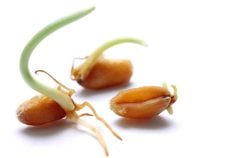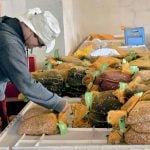Selenium deficiency in cattle can be a serious condition, but producers who try to fix the problem can cause bigger problems.
Known as white muscle disease, selenium deficiency mainly attacks newborn calves. The condition affects all muscles of the animal, including the heart. Affected cattle cannot stand or walk, have difficulty swallowing or breathing and may die.
“But prevention of white muscle disease is not as simple as supplementing the diet with selenium,” said Saskatchewan Agriculture livestock agrologist Jim Armstrong.
“In fact, in a rush to prevent the disease, some producers are overdosing their animals and causing toxicities, which result in abortions, elongated hooves and hair loss on the tail, back and head.”
Read Also

More factors affecting winter weather
When you combine a weak La Niña, early Siberian snow, and a warm northern Pacific, it’s easy to see why long-range winter forecasting is so complex.
Selenium is one of the most important but misunderstood trace minerals in livestock nutrition.
Toxicity can be caused by feeding an extremely high dose at one time, feeding high doses during an extended time or by interaction of the selenium with other nutrients in the diet, such as minerals.
“Selenium, for example, works in consort with vitamin E, but it’s a complex relationship that requires balance,” Armstrong said.
“Inorganic selenium is inexpensive, so it is added to feeds, salt supplies and supplements, whereas vitamin E is expensive and is often not added to feeds and supplements. For these reasons, an imbalance often occurs.
“Furthermore, the margin between selenium deficiency and toxicity is much less than the margins for other trace elements such as copper, zinc and manganese. You can’t be careless with selenium.”
The margin between selenium deficiency and toxicity is further complicated by levels of selenium found in the environment. Armstrong said a recent two-year feed-testing project measured selenium in a variety of forages. The highest levels were in selected alfalfa fields. Levels varied throughout the season and between the samples. Recent water tests in various locations revealed selenium levels ranging from high to below normal.
Feed tests have also shown high levels. Selenium in some samples of canola meal was as high as 1.2 parts per million. The industry standard for selenium in canola meal is 0.6 ppm.
“The levels of selenium in the forages were not sufficient to cause toxicity symptoms unless they were supplemented with high levels of selenium in salt or mineral feeds – and many producers feed minerals and salt with added selenium, especially as calving time approaches,” Armstrong said.
“The additive effects of many sources not only exceeds recommendations, it threatens the health of the livestock.”














